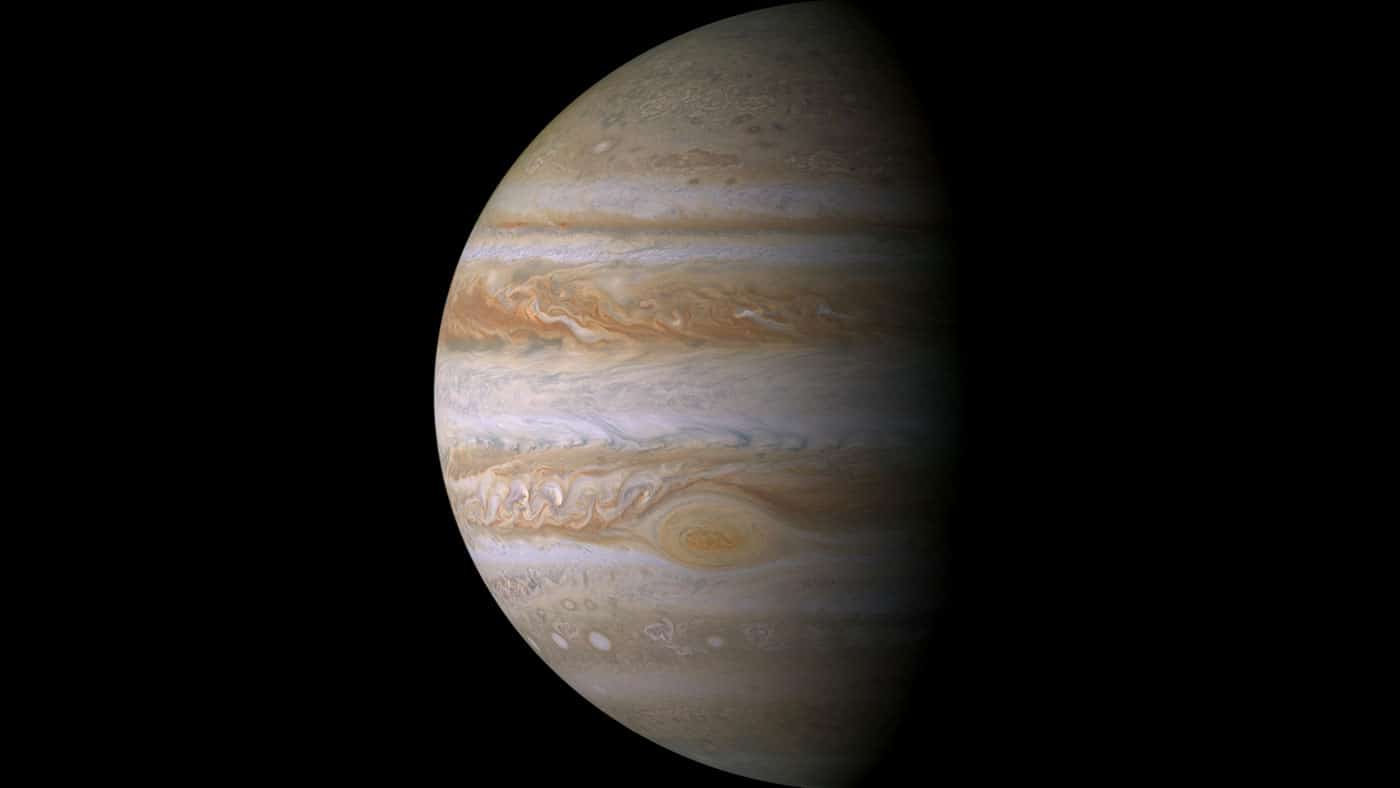
 On July 10, just days after celebrating its first anniversary in Jupiter orbit, NASA’s Juno spacecraft will fly directly over Jupiter’s Great Red Spot, the gas giant’s iconic, 10,000-mile-wide storm. This will be humanity’s first up-close and personal view of the gigantic feature—a storm monitored since 1830 and possibly existing for more than 350 years.
On July 10, just days after celebrating its first anniversary in Jupiter orbit, NASA’s Juno spacecraft will fly directly over Jupiter’s Great Red Spot, the gas giant’s iconic, 10,000-mile-wide storm. This will be humanity’s first up-close and personal view of the gigantic feature—a storm monitored since 1830 and possibly existing for more than 350 years.
“Jupiter’s mysterious Great Red Spot is probably the best-known feature of Jupiter,” said Scott Bolton, principal investigator of Juno from the Southwest Research Institute in San Antonio. “This monumental storm has raged on the solar system’s biggest planet for centuries. Now, Juno and her cloud-penetrating science instruments will dive in to see how deep the roots of this storm go, and help us understand how this giant storm works and what makes it so special.”
The data collection of the Great Red Spot is part of Juno’s sixth science flyby over Jupiter’s mysterious cloud tops. Perijove (the point at which an orbit comes closest to Jupiter’s center) will be on Monday, July 10, at 6:55 p.m. PDT. At the time of perijove, Juno will be about 2,200 miles above the planet’s cloud tops. Eleven minutes and 33 seconds later, Juno will have covered another 24,713 miles and will be directly above the coiling crimson cloud tops of Jupiter’s Great Red Spot. The spacecraft will pass about 5,600 miles above the Giant Red Spot clouds. All eight of the spacecraft’s instruments as well as its imager, JunoCam, will be turned on during the flyby.
As of July 4 Juno had logged exactly one year in Jupiter orbit. At the time, the spacecraft had chalked up about 71 million miles in orbit around the giant planet.
“The success of science collection at Jupiter is a testament to the dedication, creativity and technical abilities of the NASA-Juno team,” said Rick Nybakken, project manager for Juno from NASA’s Jet Propulsion Laboratory in Pasadena, California. “Each new orbit brings us closer to the heart of Jupiter’s radiation belt, but so far the spacecraft has weathered the storm of electrons surrounding Jupiter better than we could have ever imagined.”
Juno launched on Aug. 5, 2011, from Cape Canaveral, Florida. During its mission of exploration, Juno soars low over the planet’s cloud tops—as close as 2,100 miles. During these flybys, Juno is probing beneath the obscuring cloud cover of Jupiter and studying its auroras to learn more about the planet’s origins, structure, atmosphere and magnetosphere.
Early science results from NASA’s Juno mission portray the largest planet in our solar system as a turbulent world, with an intriguingly complex interior structure, energetic polar aurora, and huge polar cyclones.
The Great Red Spot’s first sighting is often credited to Robert Hooke, who described a spot on the planet in May 1664; however, it is likely that Hooke’s spot was in the wrong belt altogether (the North Equatorial Belt, versus the current Great Red Spot’s location in the South Equatorial Belt). More convincing is Giovanni Cassini’s description of a “permanent spot” the following year, 1665. The spot has been monitored almost continuously since 1830.
JPL manages the Juno mission (https://www.nasa.gov/juno, http://missionjuno.org) for the principal investigator, Scott Bolton, of Southwest Research Institute. The Juno mission is part of the New Frontiers Program managed by NASA’s Marshall Space Flight Center in Huntsville, Alabama, for the Science Mission Directorate. Lockheed Martin Space Systems, Denver, built the spacecraft. JPL is a division of Caltech in Pasadena.


Be the first to comment